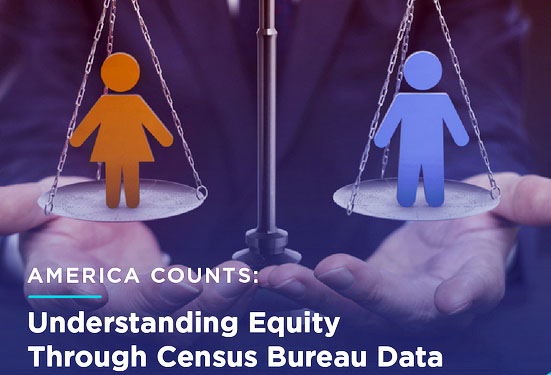WASHINGTON, D.C. – The more than $400 billion in federal funds distributed in two rounds of stimulus payments during the initial phases of the coronavirus pandemic helped lift 11.7 million Americans out of poverty.
That’s the conclusion of data contained in the Supplemental Poverty Measure (SPM) report released by the U.S. Census Bureau on Sept. 14.
“The official U.S. poverty rate was 11.4 percent (in 2020), up by 1 percent from 2019,” according to Census spokesman Mike Friedrich.
But Kalee Burns, an economist in the Poverty Statistics Branch of the Census Bureau says that the bad news from 2020 would have been much worst without those stimulus checks.
Absent government financial intervention, the SPM report indicates the U.S. poverty rate would have risen by 3.6 percent to 14 percent.
That financial intervention came in the form of two waves of direct payments to individuals authorized by the $2 trillion Coronavirus Aid Relief and Economic Security (CARES) Act in 2020 and the $1.9 trillion American Rescue Plan Act (ARPA) in 2021.
Along with numerous grants to states and industries as well as extended unemployment benefits, those statutes allocated more than $400 billion in direct payments of $1,200 to individuals and $500 to families per dependent child.
According to the U.S. Office of Management and Budget, the poverty level threshold for a family of four in 2020 was a household income of $26,496.
Census data says there were 37.2 million Americans living in poverty in 2020, approximately 3.3 million more than in 2019.
The newly released SPM report indicates that the number of Americans living in poverty would have been 45.6 million in 2020 without the impact of the federal stimulus checks.
The largest group of individuals lifted out of poverty by the stimulus payments was 6.4 million adults between 18 and 64 years of age.
That group includes 2.6 million Non-Hispanic White individuals and 1.3 million African-Americans.
The stimulus checks also significantly reduced the number of children of various races and ethnic groups experiencing poverty.
The poverty rate for African-American children was reduced by 6.8 percent points, down to 16.9 percent from 23.7 percent in 2019. That reduction represented more than 750,000 African-American children lifted out of poverty by stimulus payments.
The stimulus payments also reduced the Hispanic child poverty rate by 6.8 percent, benefiting 1.3 million Hispanic children.
Additionally, 1 million Non-Hispanic White children and more than 150,000 Asian-American children were lifted out of poverty by the stimulus payments.
The SPM report is an addendum to the Census Bureau’s Current Population Survey Annual Social and Economic Supplement, which is administered each year between February and April by telephone and in-person polling.

